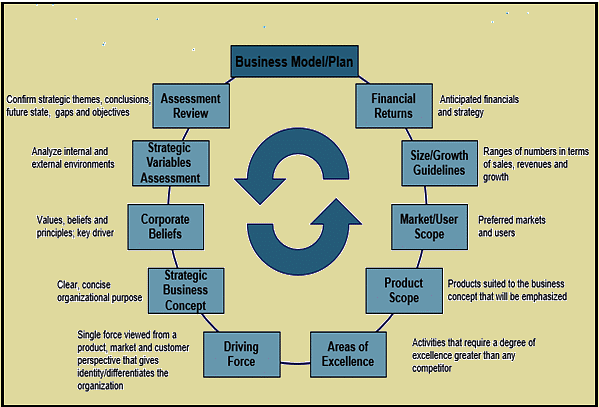Strategic Profile of a Firm | Management Optional Notes for UPSC PDF Download
Introduction
A strategic profile represents a company's past, present products, services, and future plans. Creating this profile involves using a SWOT analysis, a valuable tool that helps understand the company's direction in planning, goal-setting, and strategy development. Many firms experience gradual growth, expanding and gaining new resources and customers naturally over time.
Organizational Strategy Basics:
- An organizational strategy is like a roadmap for a business, showing its desires and needs over time, along with the goals it aims to achieve in the short and long term.
First Step in Creating a Strategic Profile:
- Stating the organizational strategy is the initial step in building a strategic profile. It sets the foundation for the company's mission and vision for development.
Developing the Formal Strategic Profile:
- Once the organizational strategy is clear, the next step is creating the formal strategic profile, which outlines the benefits and drawbacks of the business in a clear and concise manner.
Strategic Profile Framework

Steps in Developing a Strategic Profile
Step 1: Collect Company Background Information:
- Gather info about the company's history, origin, past sales, and growth. Outline internal and external factors impacting the business.
Step 2: Compose Mission and Vision Statement:
- Write a mission statement explaining the business's purpose and how it meets customer needs.
Step 3: Conduct Situation Analysis:
- Analyze the general, industry, and competitive environments. Identify the market served, industry conditions, and competitors.
Step 4: Perform SWOT Analysis:
- Assess strengths, weaknesses, opportunities, and threats. Strengths and weaknesses are internal, while opportunities and threats are external.
Understanding SWOT Analysis:
- SWOT stands for Strengths, Weaknesses, Opportunities, and Threats.
- Strengths are advantages over competitors, unique marketing positions, and market share.
- Weaknesses are internal issues like a lack of qualified workers or financing.
- Opportunities are new markets, customers, or technological advancements.
- Threats are external factors like competitors or anything hindering profits.
Benefits of Strategic Profiles:
- Detailed Information: Strategic profiles provide detailed info about a company's history and offerings.
- Mission and Vision: Consumers can learn about a company's mission and vision through strategic profiles.
- Performance Evaluation: Organizations use strategic profiles to evaluate past performance and identify internal weaknesses.
- Direction for Objectives: Strategic profiles and objectives guide organizations in achieving their goals.
FAQs on Strategic Profile of a Firm - Management Optional Notes for UPSC
| 1. What is a strategic profile of a firm? |  |
| 2. Why is a strategic profile important for a firm? |  |
| 3. What are the key components of a strategic profile of a firm? |  |
| 4. How can a firm identify its competitive advantage in its strategic profile? |  |
| 5. What are the benefits of developing a strategic profile for a firm? |  |




















